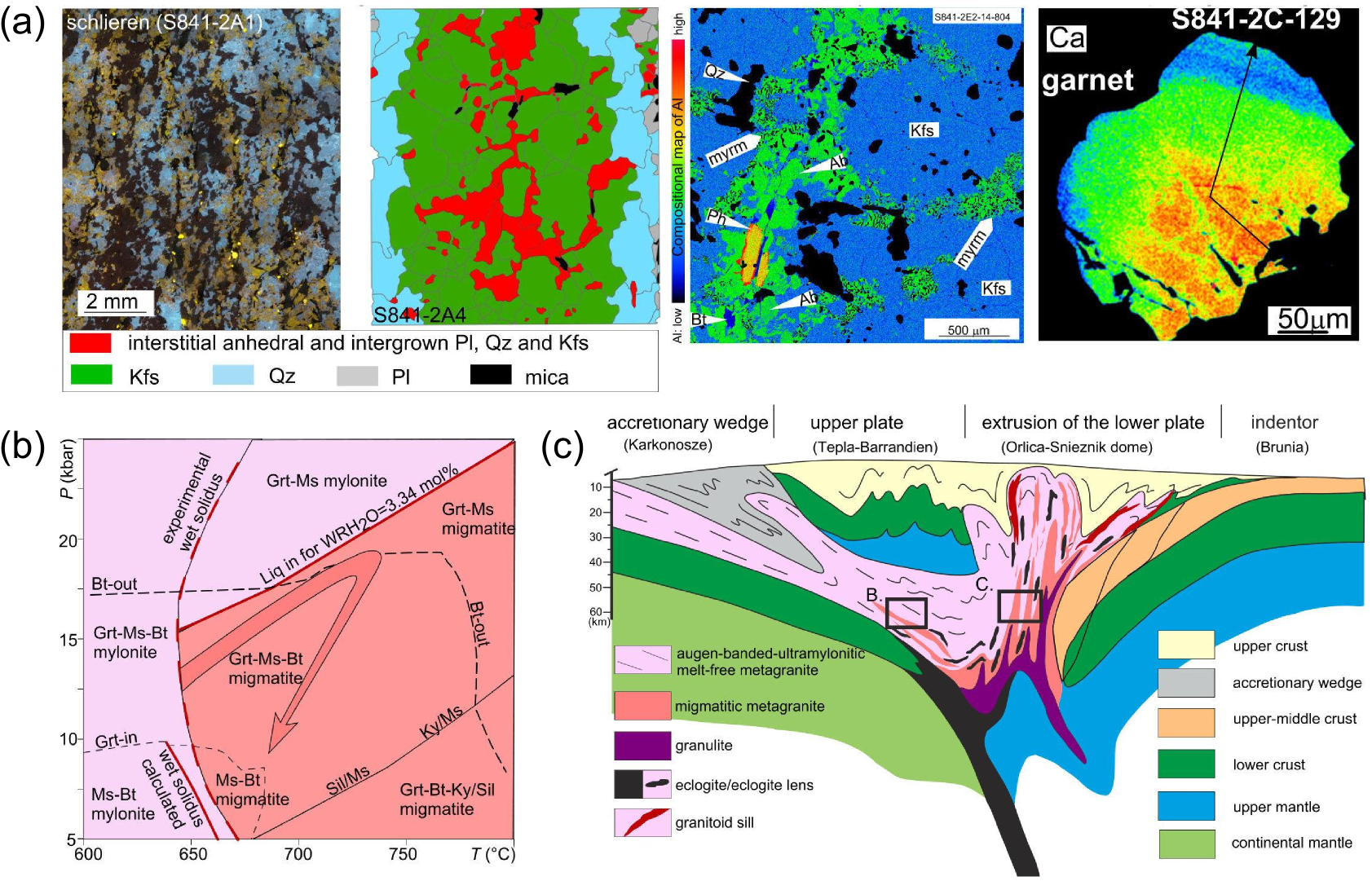P-T-t-d paths in orogens
The construction of pressure-temperature-time-deformation (P-T-t-d) paths in orogens is one of the most successful approaches developed by CLR team members during the last decades. This approach is applied to the study of burial, lateral flow of rocks in the crust and mantle, and their exhumation, generally in a convergent geodynamic setting. To characterize P-T conditions of superposed orogenic fabrics we combine petrographic observations and mineral chemical analyses form individual rocks fabrics with thermodynamic modelling. To date metamorphic and deformation events we apply mostly in-situ monazite and zircon petrochronology dating methods. These allow simultaneous study of isotopic ratios for U-Pb dating with mineral chemistry (such as rare earth element composition), allowing direct linking between the obtained ages and P-T conditions of rocks evolution. Special attention is paid to partial melting of crustal rocks, due to its large influence on rock behaviour. We study P-T conditions of melting in dependence of rock type and H2O amount, impact of partial melting on geo-chronometers, melt transport processes from micro- to macro-scale and its influence on rock rheology and large-scale geodynamic processes. This combination of methods provides a unique and comprehensive insight into polyphase evolution of orogenic systems.
Example of zircon petrochronology applied to (a) eclogite and granulite from Blanský les, Bohemian Massif. (b,c) Zircon-garnet equilibrium in rare earth elements with respect to zircon age. [link]
Study of melt infiltration in metagranitoids (Snieznik dome, Bohemian Massif). (a) Microscopic observations of grain-scale melt distribution, mineral chemistry revealed, associated high-pressure phengite and garnet. (b) Thermodynamic modelling: mineral association is stable only if water is added to rocks. Being above wet solidus, the water is added in hydrous melt. (c) Tectonic scenario: melt infiltration facilitated exhumation of subducted and relaminated lower-plate continental crust through the upper plate. [link]


